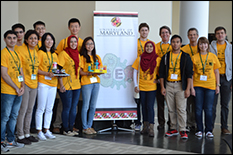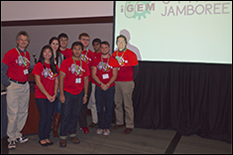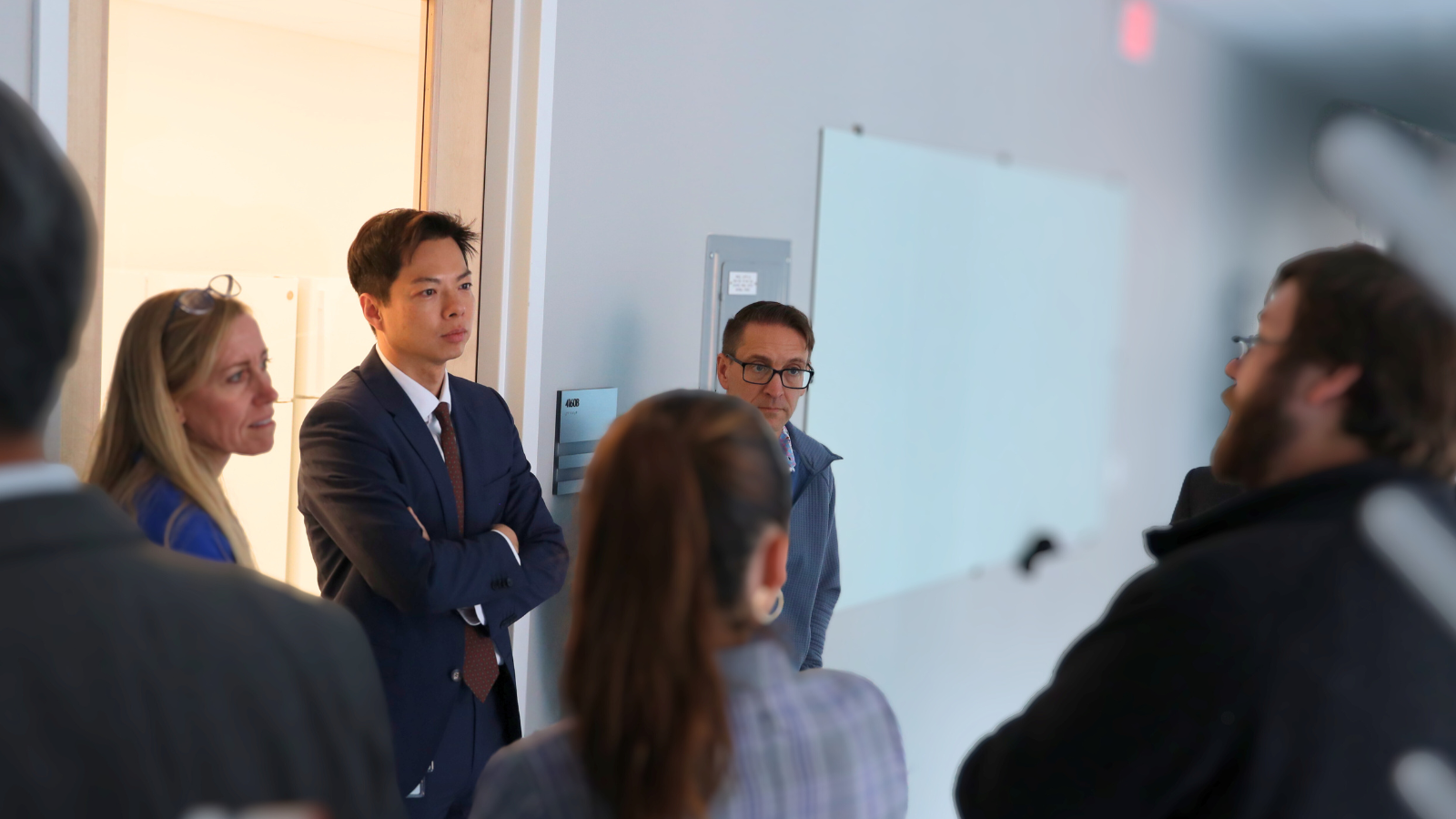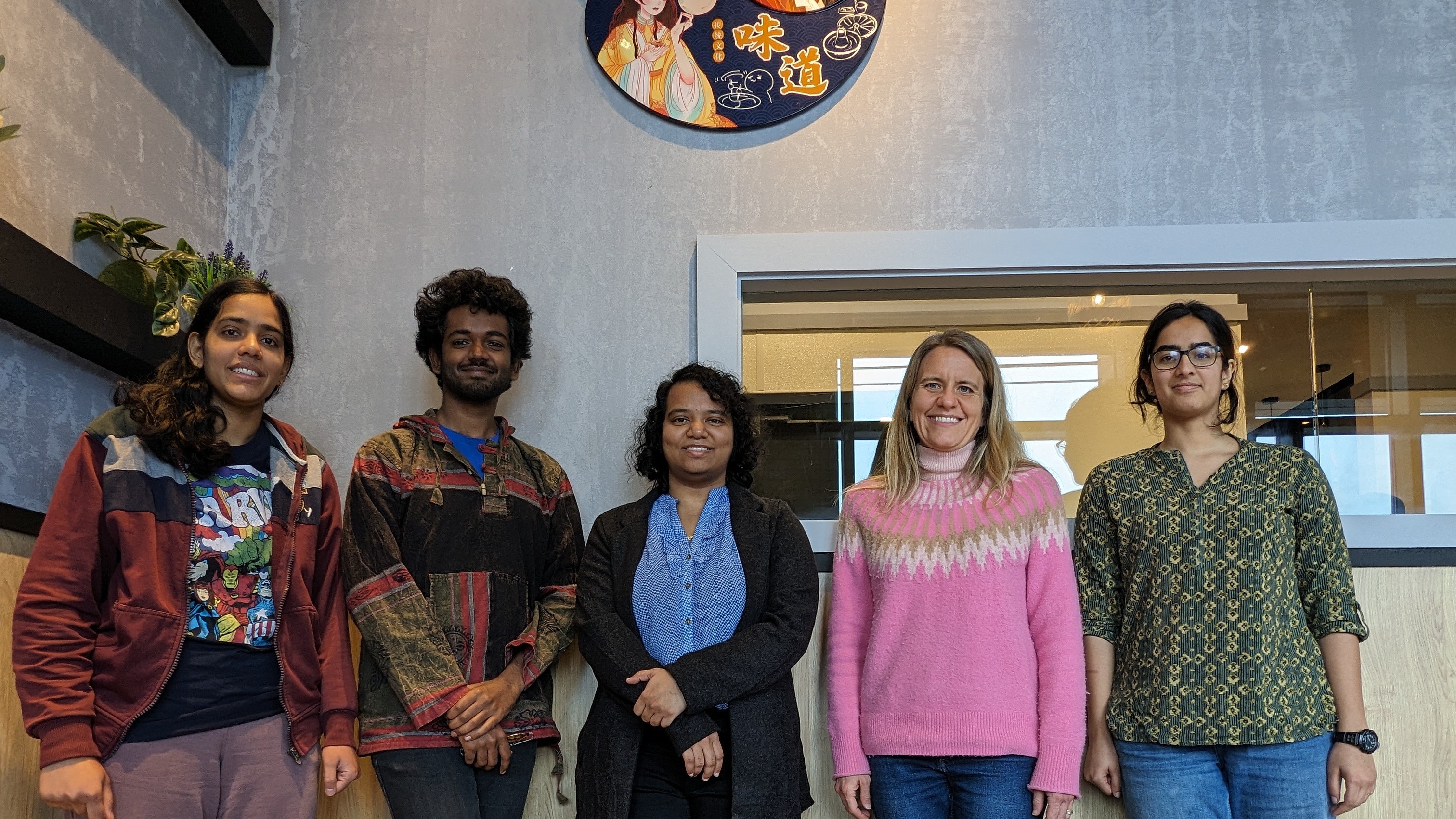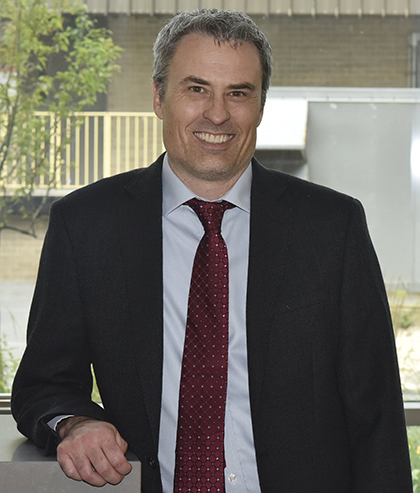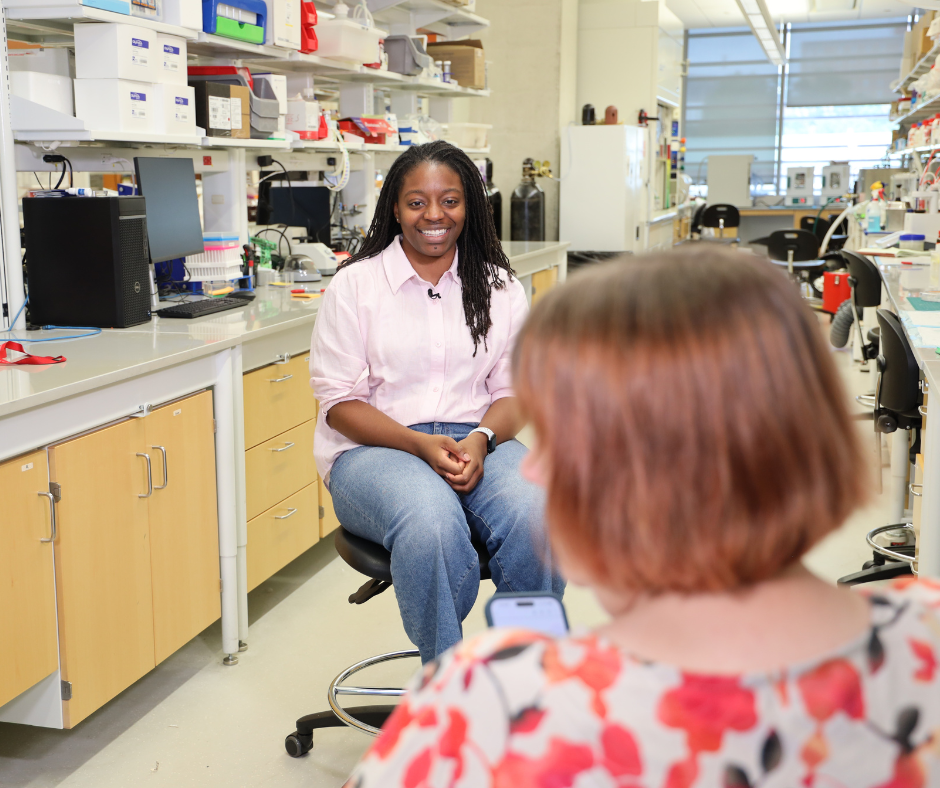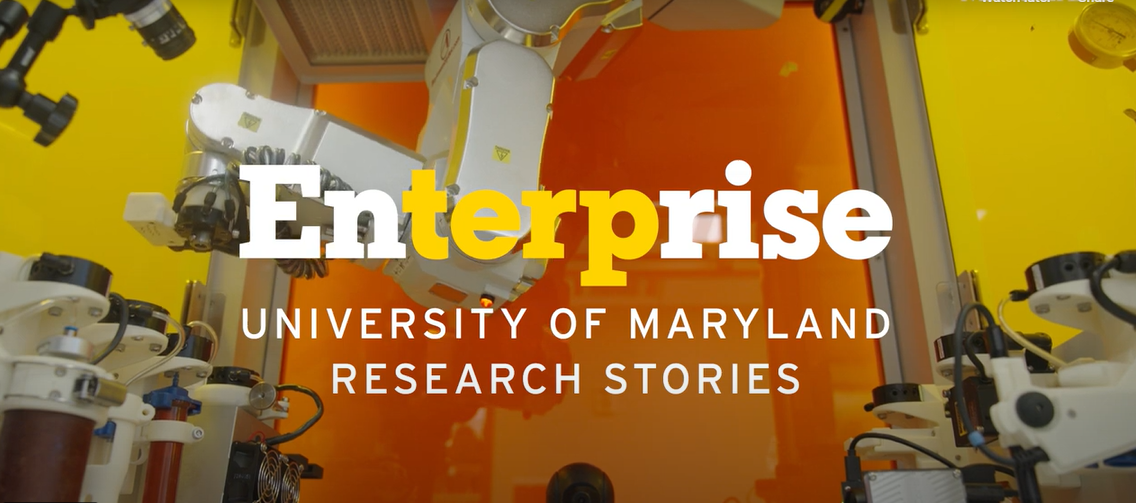News Story
UMD iGEM Team Awarded Gold Medal for Plastic Degradation Project
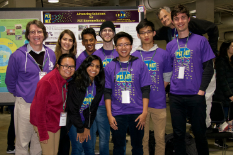
Each year, the world produces over 300 million pounds of plastics; yet, according to a 2018 United Nations report, more than one-third of all plastic is used in materials that are thrown away after a single use, and less than 10 percent is ever recycled. The explosion in worldwide plastic production – a reality that is little more than a half-century old – has led to extensive pollution, threatening human health, wildlife, water, and the Earth’s climate.
Recognizing this, an interdisciplinary team of 12 University of Maryland students, whose project is known as PETNET, is employing new tactics in search of a scalable solution for breaking down polyethylene terephthalate (PET), the world’s most commonly used plastic.
The team – which earned a gold medal at this year’s International Genetically Engineered Machine (iGEM) competition in Boston, Mass. – worked to address critical shortcomings that have long eluded researchers on a quest to rid the world of plastic waste. Even more, the group developed a system using a biosensor that could allow researchers to carry out routine measurements of PET degradation without relying on expensive lab equipment to do so.
“The buildup of plastics is a challenging issue that lacks a simple solution,” said biochemistry and biological sciences double major Jacob Premo, a UMD iGEM team member. “While recycling can help to counteract plastic waste accumulation, it is limited in scope to only certain types of plastic that are of a sufficient crystallinity. Our team decided to attempt to create a solution to this issue by optimizing an enzyme-based breakdown of PET.”
“The students saw a unique opportunity to engineer a synthetic biology approach to address the incredibly important problem of plastic pollution,” said the team’s faculty co-advisor Edward Eisenstein, a Fischell Department of Bioengineering (BIOE) associate professor and UMD Institute for Bioscience and Biotechnology Research fellow. “The UMD iGEM team developed a novel system for efficiently converting PET to renewable resources, but, perhaps more impressive, is their use of a robust but simple sensor to assess PET degradation. iGEM teams, in particular, do not have regular access to expensive equipment for quantitative analyses of PET degradation, but the PETNET innovation could eliminate that need.”
Building on years of research – including findings put forth by nearly two dozen previous iGEM teams – the UMD iGEM team is working with an enzyme known as PETase, derived from the bacterial speciesIdeonella sakaiensis. PETase has been found to break down PET plastic into byproducts that can be fully recycled for new uses.
But, challenges remain. The breakdown process carried out byIdeonella sakaiensis is slow and not yet scalable – and worldwide plastic production would far outpace progress made in breaking down PET plastic, unless researchers find a way to ramp up the process. Additionally, as the UMD iGEM team encountered, techniques used today to measure the rate of PET degradation require access to expensive lab equipment – a major roadblock for student engineers.
That’s where UMD iGEM hopes to leave its mark.
“PETNET” itself refers to a biocatalytic flow reactor, which the group specifically designed to maximize the degradation efficiency of the PETase fusion protein. The system – partially modeled after the human digestive system – consists of a series of interconnected tubes, the inner surfaces of which are covered in bacterial cellulose.
Inspired by findings from researchers at the Imperial College of London in 2014, the UMD team decided to utilize what is known as a cellulose-binding domain (CBD) to bind PETase to the surface of a plastic. The group’s aim is to do this by wrapping bacterial cellulose around a given plastic, allowing the bacterial cellulose to act as a scaffold on which PETase can do its job. CBD partially immobilizes the PETase protein onto the bacterial cellulose. This increases the number of interactions between the plastic and the protein, and therefore increases the likelihood of a successful catalytic reaction to degrade the plastic.
The UMD iGEM team hopes that, through this technique, PETase would quite literally eat away at plastic at a fast enough rate – and via a scalable approach – allowing scientists to one day undo some of the damage caused by plastic pollution.
“In consultation with experts and inspired by previous iGEM projects, the students realized that a synthetic biology solution to plastic waste is possible, but it has to meet several difficult criteria,” said the team’s faculty co-advisor Jason Kahn, an associate professor in the Department of Chemistry and Biochemistry. “For cost and energy efficiency reasons, the students recognized that their solution should be modular and portable, and to avoid contributing to the problem of environmental microplastics, the team felt that their proposed solution should produce only soluble and nontoxic products. Even more, the group recognized that their project should provide a platform for future improvement, since existing enzymes are slow.”
Although a great deal of work needs to be done, the UMD iGEM team's preliminary models are encouraging. Their calculations indicate that their plastic bioremediation technique could be used to degrade a water bottle made of PET plastic in as little as two weeks. This would represent a monumental achievement; left simply to nature, a plastic bottle in existence today would take upwards of 450 years to degrade.
The group’s project features a modular design that allows for rapid scalability, and the reactor modules can be easily produced and quickly assembled. The system employs a newly developed fluorescent biosensor that allows the team to quantify PET degradation through bacterial fluorescence – without the need for expensive instruments. As such, the system can be used in a variety of laboratory and non-laboratory settings at a low cost.
“Today, you need powerful instruments to measure plastic degradation because it can’t be seen with the naked eye on a short time scale,” said UMD iGEM team member Chris Kuffner, a BIOE student. “But, the sensor we’re using is so extraordinarily sensitive that you could actually use it to detect plastic degradation based on how brightly the bacteria glow green. If one bacterium is degrading the plastic at a faster rate than another, it’s going to glow brighter.”
This ability to rapidly quantify plastic degradation is key. After all, modern science enables bioengineers to alter the plastic-degrading enzyme in countless ways, in search of the variation of PETase that can break down plastic the fastest.
“Just imagine having to look at each mutant enzyme, one at a time, under a scanning electron microscope to identify which is best,” Kuffner said. “Bioengineers can mutate the plastic-degrading enzyme into millions of variations – and now, using this sensor, our hope is to provide a method by which researchers could really sort through the enzyme variations, quickly, without the use of expensive equipment.”
The UMaryland iGEM team was founded in 2014 by Eisenstein, Kahn and Bryn “Boots” Quimby, who was then the associate director of the Integrated Life Sciences (ILS) program in the Honors College. In previous years, iGEM teams carried out integrated synthetic biology projects on biosensors for diseases affecting oysters, bacteria engineered to express proteins that fight fungi that infect banana plants, toxin/antitoxin systems for maintaining plasmids without the use of antibiotics, and methane decomposition to carbon dioxide. Undergraduates prepare for summer laboratory and outreach work by taking BSCI 338F/BIOE 389F in the spring. The team has received generous support from ILS; the College of Computer, Mathematical, and Natural Sciences; the Fischell Department of Bioengineering; and the A. James Clark School of Engineering; as well as funds raised through Launch UMD and other crowdfunding avenues.
This year’s UMD iGEM team members are: Fischell Department of Bioengineering students Jessica Boyer, Arjun Cherupalla, Collin Keating, Chris Kuffner, Yutong (Tommy) Liang, and Keerthana Srinivasan*; biochemistry and biological sciences double majorsSangHo Jee* and Jacob Premo*; biological sciences majors Chun Kit Loke* and Daniel Zheng*; Department of Chemical and Biomolecular Engineering student John Starkel; and Department of Kinesiology student Mary Heng. Asterisks note members of the ILS program in the Honors College.
Published November 5, 2018

